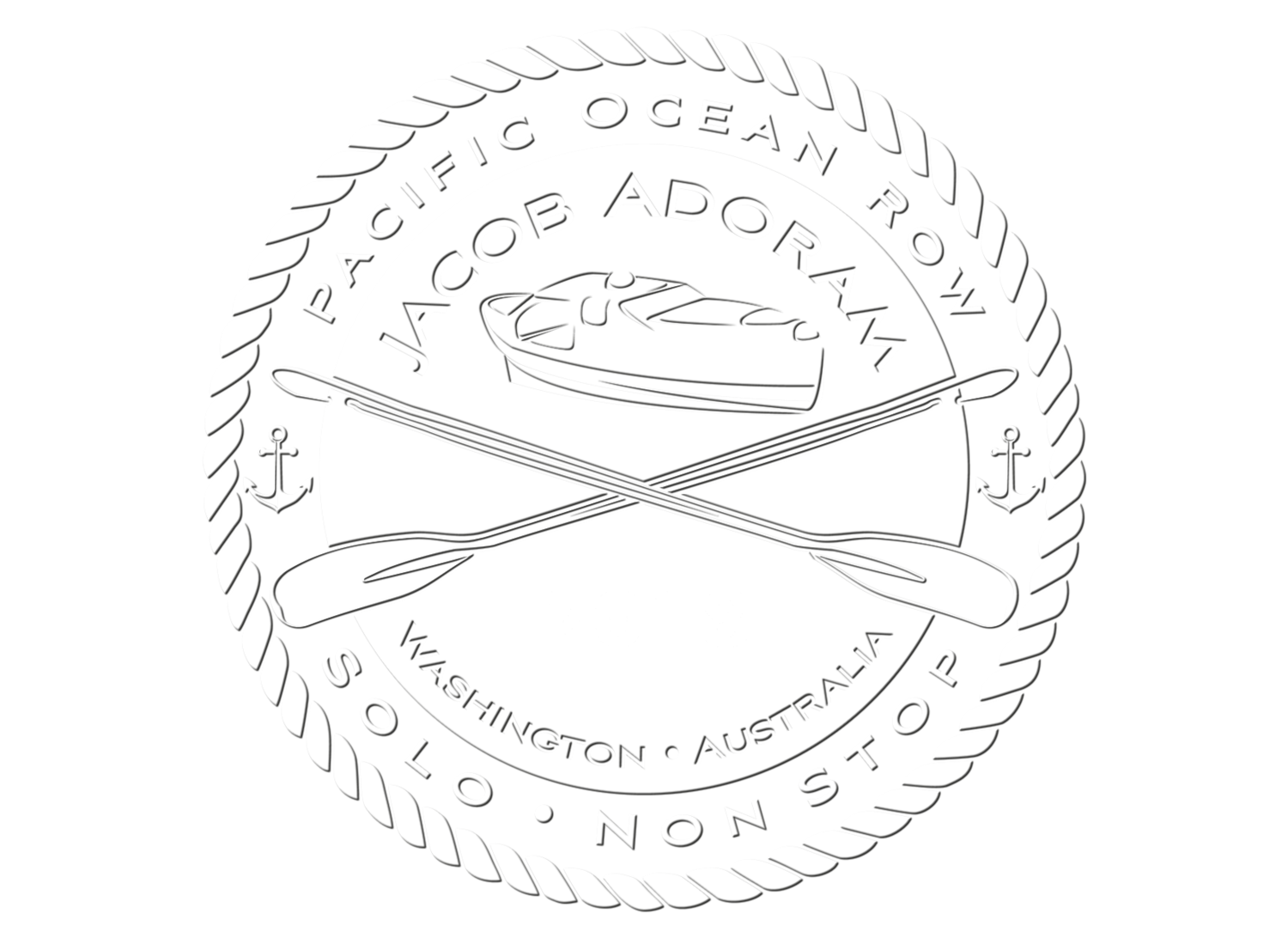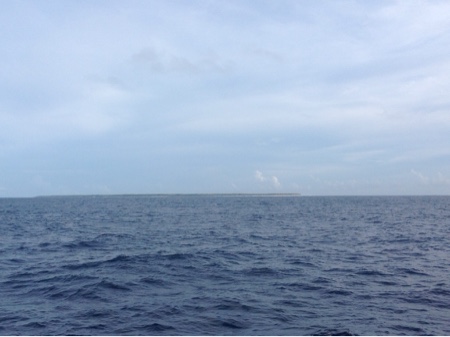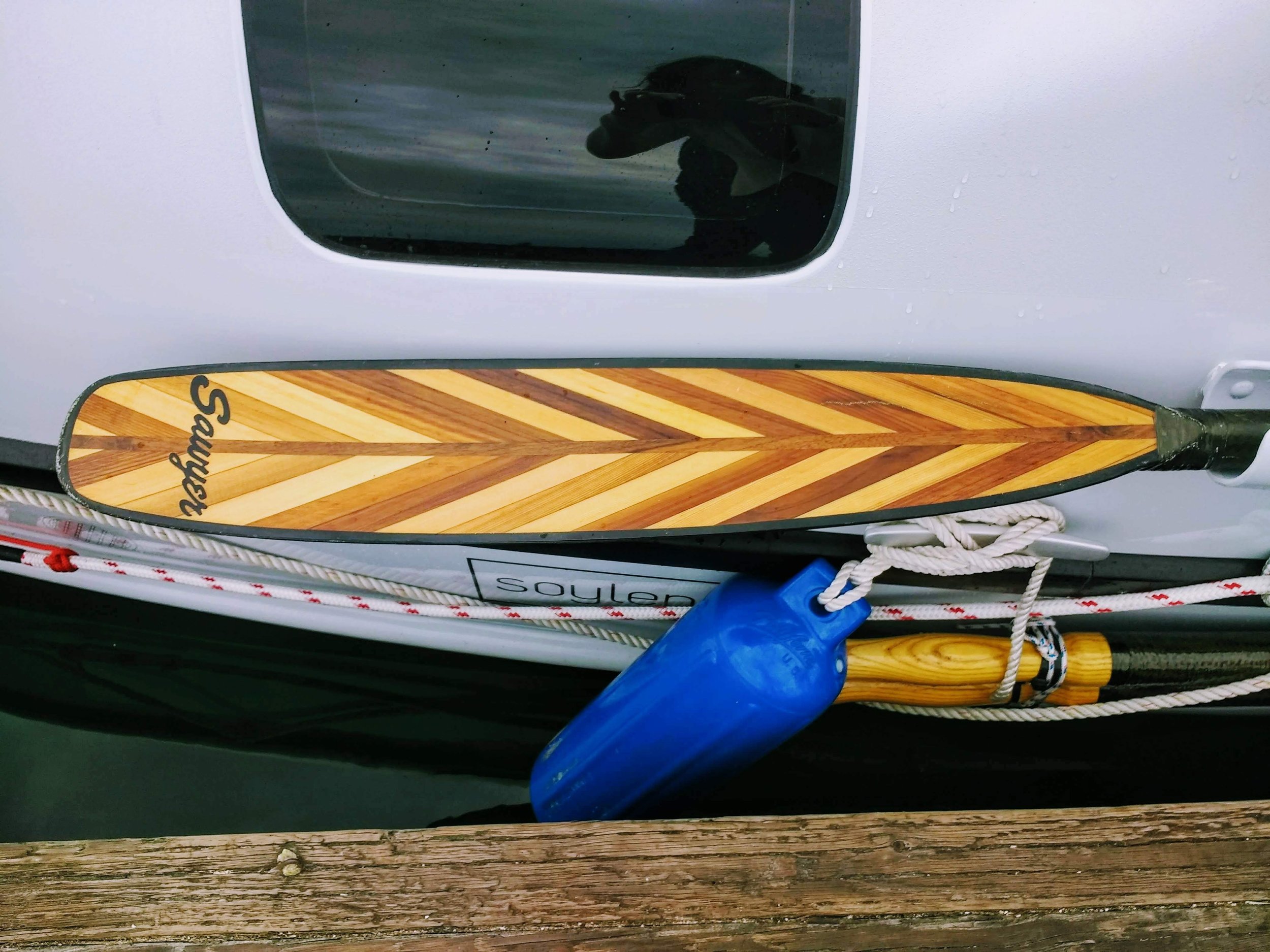Shortly after crossing the equator I found myself in the middle of a wildlife extravaganza. First I saw 1 dolphin, then 2, then maybe 10, all swimming to my right, the closest 20 yards away. The first one is always startling - a giant, dark grey creature partially emerging from the depths. Then it's terribly exciting, look at them all! Swimming right here! In the midst of half a dozen rolling backs I see 2 or 3 flying fish burst out of the water, pointing in the opposite direction. By the way, flying fish can both steer while airborne, and skip off the water, just like a flat stone on a lake. It's really weird looking. The skip is almost a re-launch to the awkward gliding. Thinking about it, the steering might just be balancing to level, I've been unable to interview the fish thus far, but it looks like steering.
Less than a second after the flying fish emerge, so does a very determined 4 foot long predator. The pursuing fish was silver with a blue dorsal area, and what appeared to be a giant head. That thing was keeping an eye on the flying fish both above and below the water, jumping 2 or 3 feet above the surface. The time between consecutive jumps was almost immediate, a turnaround almost too quick to believe. The dolphins seemed unperturbed by the proceedings at hand. However, an airborne predator was on the scene almost immediately. I didn't even know they were nearby, but maybe 5 seconds after the first flying fish appeared, there were two Frigates overhead.
These birds are incredibly agile. They appear to have 5 or 6 foot wing spans; it's difficult to tell since I normally see them at greater distances. Despite their size, they can somehow reside inches above the water, plucking fish from the air, or from just below the surface, regardless of the sea state. The determined swimming predator stopped pursuing in light of the new players involved. Or at least stopped jumping. The first swoops down were a miss, the Frigates then executed aggressive safe escape maneuvers, almost a vertical climb away from the sea, safely clear of the next wave. It's incredibly impressive watching the maneuvers. I find myself wondering what kind of G-Forces are at play, especially with hollow bones in the mix. I don't think they won this round; I didn't see any bird gulping this time.
Meanwhile, there is a Storm Petrel ignoring the dolphins, the fish, and the other birds. Instead, its tiny black eyes are spotting prey I can't even see, things like plankton. This guy is the true maneuverability king. It's just as maneuverable as a humming bird it seems, yet uses regular bird flapping techniques (as far as I can tell, what do I know). It's baffling watching this tiny 6 inch bird hover over the face of a wave, pluck something out of the water, then execute a crazy backflip maneuver to keep from getting run down by the wave itself. It also glides gracefully and quickly, it can do anything it seems - except fly backwards, maybe. This entire explosion of activity happened within 120 seconds, then it was back to silence.
By the way, during a squall yesterday, I was taking a shower courtesy of Mother Nature. It's surreal showering in that manner; just the sheer amount of water pouring down is impressive. The waves look different - more clearly defined as the striations of capillary waves disappear. The visibility dropped down to less than a mile, the water droplets increased in size, and the wind began churning, transforming droplets into stinging projectiles. I stayed until the stinging became more unpleasant than the cool shower was pleasant. Meanwhile, I looked up and right and there was a lone Frigate taking the punishment, just like me. Except he didn't have the refuge of a cabin once things got dicey.
In other news, I've begun collaboration with Crossfit Bolt in Texas on a rowing challenge. It's a 100 day challenge, me trying to make the finish line, and them trying to beat me using rowing machines. The 100th day will be on May 30th 2019. So there is the preliminary target date for reaching the end zone. It's preliminary, and likely nowhere near when I'll make landfall somewhere, but it's a date nonetheless. Don't buy plane tickets based on this estimate, just know it's there. Matt McCraney is the owner of Crossfit Bolt, is an AF Academy graduate, and played football. If you're in the Dallas area, check his place out, the is link on my homepage.
Game On
Pictured above: Tamana, an island of Kiribati. It's the most SW island of the country, I believe. I've been going through Kiribati for over a month now. So finally, goodbye Kiribati! I hope to visit in the future.





